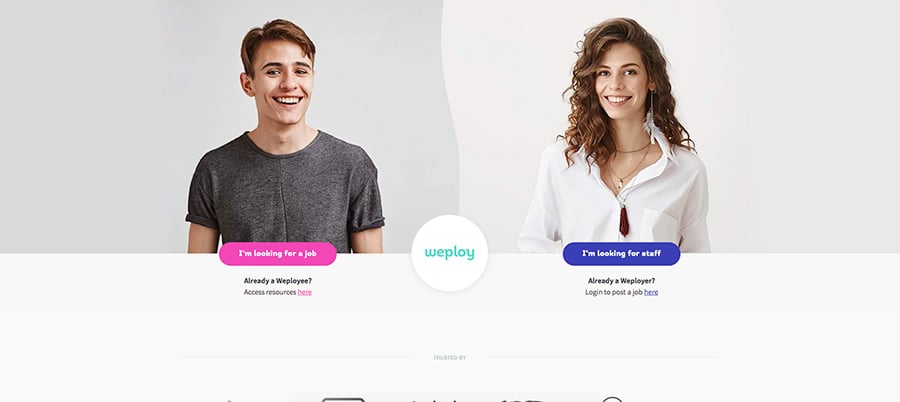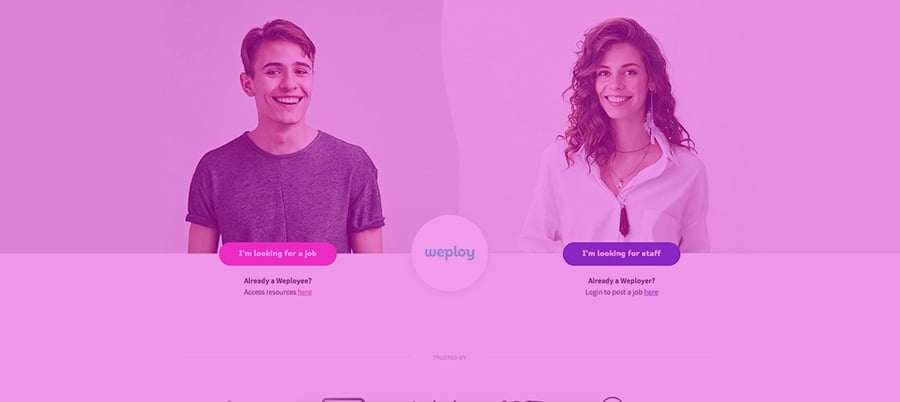Smart businesses know that content is a must for effective marketing online. The question is, how do you make your words go the extra mile? Whether your content team is a one person band, or a fast growing crew, these basic conversion copy techniques are a win for your business. Are you incorporating them into your own online strategy?
What is Conversion Copywriting?
For those unfamiliar with the latest jargon, conversion copywriting is the practice of shaping words that not only sound good slung together, but serve a definite purpose. This style of writing aims to influence the way a person makes a decision — particularly when they engage in the purchasing process ― with the ultimate goal of converting online visitors into customers.
In the past, traditional copywriting focused on hard copy text, such as print advertisements, articles and pamphlets.
Today, conversion copy leverages keywords, phrases and SEO techniques to maximise your content efforts across all your online marketing platforms.
Conversion copywriters pay careful attention to the ways in which potential customers read, perceive and react to words. This not only allows them to communicate with customers more effectively, it enables them to steer the reader toward a desired ‘call to action’ — whether that be clicking a link, encouraging them to spend additional time on your website, or completing a full transaction.
Sounds clever, right? Whether you’re a copywriter by trade or anyone wanting to upskill, you’ll love these simple techniques for online success. Great copy that convinces and converts your potential customers is just what your business needs.
The Copywriting Basics Every Content Team Needs
Compelling (Not Annoying) Headlines are a Must
As annoying as Buzzfeed listicles can be, they’ve found extraordinary success ― and that’s partly due to their super savvy headlines. You’ve seen them before: headlines like “This man opened a jar of peanut butter — what happened next will shock you”, that give just enough information to make the reader want to know more, without giving away the whole story.
The lesson here is that the best headlines arouse curiosity, compelling the reader to click on the link.
If your post uses a “listicle” or list structure, then using a number in the headline has also proven to improve the clickrate of headlines. There’s a lot of trial and error with finding the perfect headline.
While these tactics usually get better results, there’s no way of knowing which the most successful headline will be without testing several beside each other. Don't stop at the first attempt — be willing to test different keywords and sentence structures to see what works for you.
The Takeaway:
- Keep your headlines approximately 5-6 words and 55 characters long
- Use numerical digits (e.g. “10” instead of “ten”) where appropriate
- Tap into positive emotions and engage your readers’ curiosity
Know Your Personas
No matter how well crafted your copy, it will never appeal to all of your buyer personas.
Since consumer segments respond differently to a statement or offering, it's important to match the most appropriate choice of style and wording to the customers you'd like to attract.
For example: at a basic level, a younger, adventurous demographic is more likely to be drawn to copy that uses cheeky or colourful language, or more controversial statements. Alternatively, a conservative, professional buyer who’s ready to make a purchase might appreciate a more straightforward, direct tone.
THE TAKEAWAY:
- Regularly refer to and update your buyer persona documents, to ensure authenticity and effectiveness
- Match the tone, style and format of content to your specific audience. You can’t catch every fish with the same net!
Write with Attention Spans in Mind
People are bombarded with information on the internet, and their time is precious, so you’ve only got a very brief opportunity to capture and maintain their attention — use it wisely.
Think about who might be reading your page, and where they’re likely to be at that moment.
Are they a time-poor professional, browsing online between meetings? If so, make your content short, concise and digestible. Restructuring long chunks of text into snappy lists can have marvellous results. After all, people love dot-points.
Alternatively, is your target customer on their home PC with a cup of tea, looking to make a purchase? In this case it may be more appropriate to elaborate on your product, and provide them with additional detail; building consumer confidence and securing a transaction.
The Takeaway:
- Quality over quantity. Writing concise and targeted content is preferred over excessive content.
Try the "Because Strategy"
Positivity is the go to emotion when it comes to your content — no one likes a negative Nancy! However, negative emotions, used sparingly, can also be an effective way to shake things up and emphasise an important point.
Studies indicate that using negative words in titles can increase the likelihood the link will be opened ― for example, ‘8 GIFS That Sum Up Why Your Blog Traffic Sucks’. Other proven keywords include DIY, hacks, surprising, smart, and 'beginners guide'.
Back in the 70s, psychologists researched how using the word “because” before a negative request or comment increased the likelihood of a favourable response. Around 90% of peoplewere willing to let someone push in queue to use a photocopier — as long as they were given a reason, even if that reason was illogical!
This suggested to the researchers that it was the word 'because' that was key in framing people’s perspectives — providing an explanation for the behaviour and making it more agreeable.
The ‘because’ strategy also helps when delivering negative information to customers. For instance: rather than stating "this product is out of stock", customers are more accepting of a simple explanation such as "this product is out of stock because we didn't realise how popular it would be over summer!".
The Takeaway:
- Use the ‘because strategy’ sparingly for maximum effect
- Avoid too much negativity in your content
Craft with Keywords in Mind
The search engines of today are sick of spam and keyword stuffing. Those bots that crawl your websites just want to deliver relevant and quality content to people’s search queries — great copywriting makes it easier for them!
The secret to great copy is all in the research: discover the most relevant keywords, use variations throughout your content, and aim for natural keyword use over forcing it. People, as well as robots, will appreciate it when you avoid hammering the same words into their heads.
The Takeaway:
- Research keywords and keyword variations, for more natural and relevant content
- Avoid keyword stuffing, the practice of repeating the same keywords ad nauseum
Over To You!
There’s no time like the present to get started on improving your business’ content. These actionable copywriting tips are just the beginning of better online experiences that’ll convince and convert your visitors into leads and beyond.



